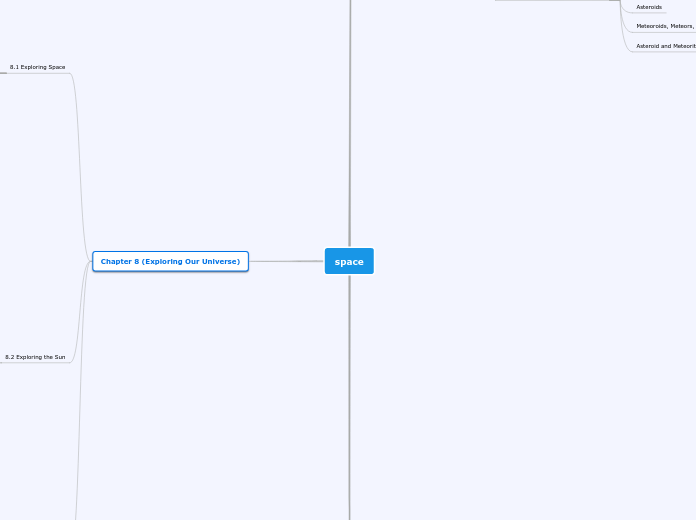a Ishan Johal - Sandalwood Heights SS (2442) 6 éve
311
space summative

a Ishan Johal - Sandalwood Heights SS (2442) 6 éve
311

Még több ilyen
Neutron Stars
High-Mass Stars
Intermediate-Mass Stars
Low-Mass Stars
The Main Sequence
Importance of the Sun
Heating Earth
Features of the Sun
Solar Flares
Evidence of a Rotating Sun
Sunspots
How the Sun Formed
A Growing Sun
Extrasolar Planets
A Flat, Rotating Disk
Evidence for the Formation of the Solar System
Issues to Consider
Canadian Astronauts
Laboratory in Space
Geosynchronous Satellites
ENVISAT
Additional Uses of ENVISAT
Remote Sensing Satellites
GPS Satellites
The Lidar Instrument
Mars Climate Orbiter
Canada's Space telescope
Studying Objects in Different Wavelengths
Canada's Space Telescope
Telescopes in Space
Dark Matter and the Milky Way Galaxy
The Search for Dark Matter
Dark Matter and the Andromeda Galaxy
Evolution of the Universe
A Young Universe
COBE and WMAP
Uncovering the CMB Radiation Evidence
Evidence of the Big Bang
Redshift and Blueshift
The Doppler Effect
The Center of the Milky Way Galaxy
The Diameter of the Milky Way Galaxy
Star Clusters
Galaxy Superclusters
The Shape of the Milky Way Galaxy
Comet Tails
The Oort Cloud
The Plight of Pluto
Outer Planets
Neptune
Uranus
Saturn
Jupiter
Inner Planets
Mars
Earth
Venus
Mercury
Classifications of the Planets
What Causes Tides?
Solar Eclipses
Lunar Eclipses
Polaris and the pointer Stars
The Big Dipper
Constellation Names
Apparent Magnitude
Random Stars in Space
Earth's Curved Shadow
The Changing Sky
Disappearing Ships
Today's Year
Mesopotamian Astronomers
Early Astronomers